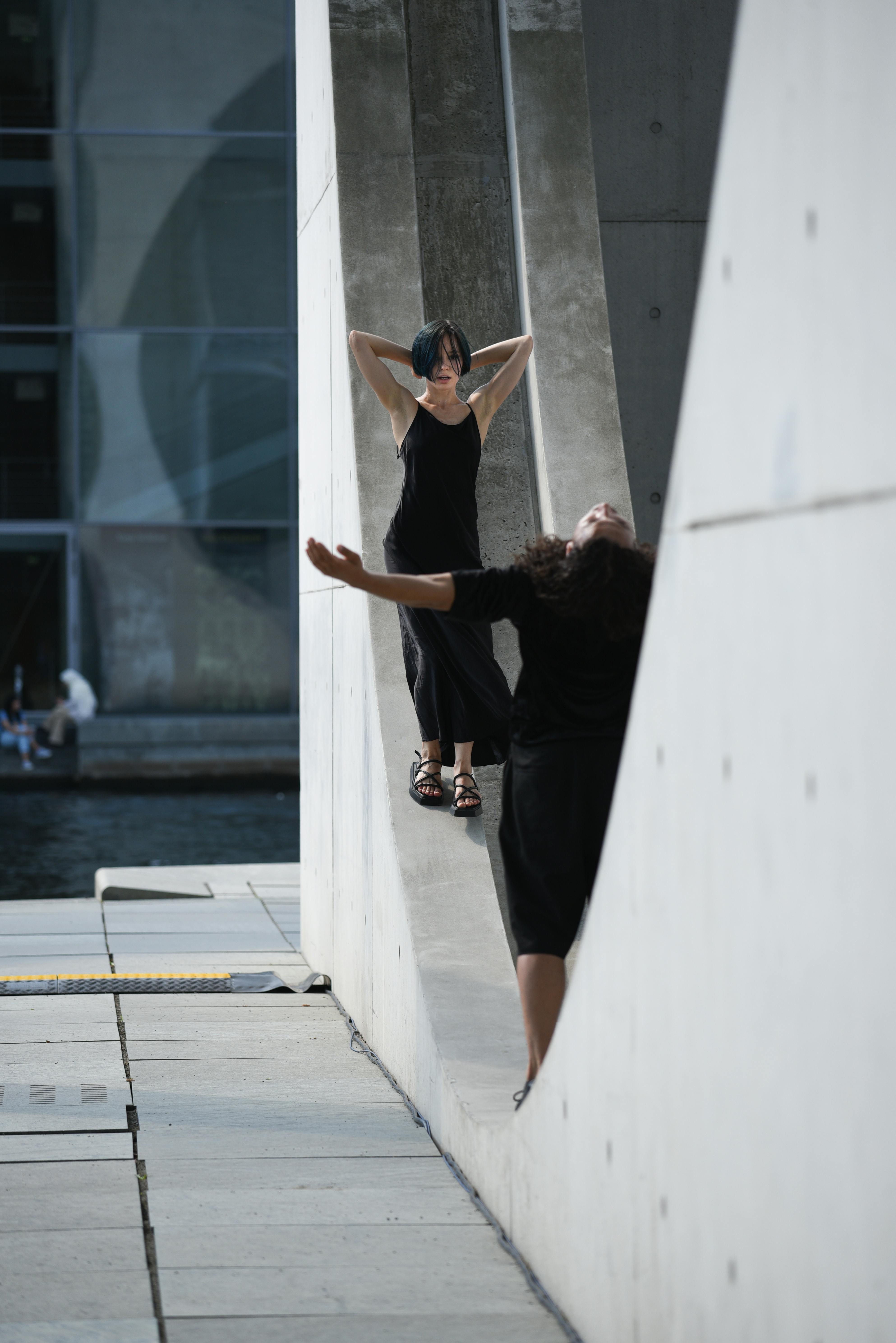Imagine this scenario: you’re lying comfortably on your side, about to drift into a peaceful slumber. But just as you start to relax, a tingling sensation starts to creep up your arm, and before you know it, your arm is completely asleep. We’ve all been there, and it can be quite frustrating. In this article, we will explore some practical tips and tricks to prevent your arm from falling asleep while side sleeping. Say goodbye to those uncomfortable pins and needles, and reclaim your peaceful night’s sleep.

Understanding Why Your Arm Falls Asleep While Side Sleeping
The Science Behind the Phenomenon
Have you ever experienced the frustrating sensation of your arm falling asleep while side sleeping? It’s a common occurrence that can leave you tossing and turning throughout the night. Understanding the science behind this phenomenon can help you address the issue and find relief.
When you sleep on your side, your body weight tends to put pressure on your arm, compressing the nerves and blood vessels. This compression restricts blood flow and causes the pins and needles sensation in your arm. The nerve compression can also lead to temporary numbness, tingling, or even pain.
Factors That Contribute to Arm Numbness
Aside from the direct pressure on your arm, there are several other factors that can contribute to the numbness you experience while side sleeping. One major factor is the position of your head and neck. If your head is not properly aligned with your spine, it can create tension in your shoulder and arm, exacerbating the discomfort.
Additionally, certain medical conditions, such as carpal tunnel syndrome or nerve impingement, can make you more prone to experiencing arm numbness while side sleeping. These underlying conditions can aggravate the nerve compression and make the issue more persistent.
The Importance of Addressing the Issue
While arm numbness may seem like a minor inconvenience, it is important to address the issue for several reasons. Firstly, the lack of proper blood circulation can lead to long-term complications, including nerve damage and muscle weakness. Ignoring the problem can make it more difficult to find relief in the future.
Furthermore, waking up with a numb arm can significantly impact your quality of sleep. Constantly repositioning yourself during the night disrupts your sleep cycle, leaving you feeling tired and groggy in the morning. By addressing the issue, you can improve your overall sleep quality and wake up feeling refreshed.
Optimizing Your Sleeping Position
Choosing the Right Pillow
One way to prevent your arm from falling asleep while side sleeping is to choose the right pillow. A supportive pillow that fills the space between your head and shoulder can help maintain proper alignment and reduce pressure on your arm. Look for a pillow that is firm enough to provide support, yet comfortable enough for a good night’s sleep.
Proper Body Alignment
In addition to the pillow, proper body alignment is crucial in preventing arm numbness. Aligning your head, neck, and spine in a straight line ensures that your weight is distributed evenly and reduces the pressure on your arm. Placing a pillow between your knees can also help align your spine and reduce strain on your arm and shoulder.
Experimenting with Different Sleeping Positions
If finding the perfect pillow and aligning your body doesn’t completely alleviate the issue, it may be worth experimenting with different sleeping positions. For some individuals, switching sides or even sleeping on their back can relieve the pressure on their arm and reduce the occurrence of numbness. It may take some trial and error to find the position that works best for you.

Improving Blood Circulation
Regular Exercise
Regular exercise not only improves your overall health but also helps boost blood circulation throughout your body. Engaging in cardiovascular activities like walking, jogging, or cycling can promote blood flow, reducing the risk of arm numbness while you sleep. Aim for at least 30 minutes of moderate exercise most days of the week.
Stretching Before Bed
Performing gentle stretching exercises before bed can also enhance blood circulation and reduce arm numbness. Focus on stretching your neck, shoulders, and arms to alleviate any tension or tightness. Incorporating these stretches into your bedtime routine can help prepare your body for a restful night’s sleep.
Avoiding Constrictive Clothing or Accessories
Wearing constrictive clothing or accessories, such as tight wristbands or bracelets, can hinder blood circulation and contribute to arm numbness. Opt for loose-fitting sleepwear and remove any jewelry or accessories that may restrict blood flow. Allowing your arms and wrists to move freely can help maintain proper circulation and prevent discomfort.
Creating a Sleep-Friendly Environment
Maintaining a Comfortable Room Temperature
Creating a sleep-friendly environment starts with maintaining a comfortable room temperature. Extreme temperatures, whether too hot or too cold, can cause discomfort and disrupt your sleep. Optimal room temperature for most people falls between 60 to 67 degrees Fahrenheit (15 to 19 degrees Celsius). Adjusting your thermostat to this range can promote better sleep and reduce the likelihood of arm numbness.
Investing in a Supportive Mattress
Your choice of mattress plays a significant role in your sleep quality and arm numbness prevention. A supportive mattress that contours to your body’s natural alignment can help distribute your weight evenly and alleviate pressure on your arm. Consider investing in a medium-firm or memory foam mattress that offers proper support and cushioning for your body.
Using Topical Pain Relief Products
If you frequently experience arm numbness while side sleeping, using topical pain relief products can provide temporary relief. Look for creams or ointments containing ingredients like menthol, camphor, or capsaicin, known for their pain-relieving properties. Applying these products to your arm before bedtime can help reduce discomfort and improve your sleep.

Managing Stress and Relaxation
Practicing Stress-Reducing Techniques
Stress and tension can contribute to arm numbness and disrupt your sleep. Finding healthy ways to manage stress can be beneficial in preventing these issues. Practicing stress-reducing techniques such as deep breathing, meditation, or yoga before bed can help relax your body and mind, reducing the likelihood of arm numbness while side sleeping.
Engaging in Relaxation Activities Before Bed
Engaging in relaxation activities before bed can also promote a more restful sleep. Reading a book, taking a warm bath, or listening to calming music can help you unwind and prepare for sleep. By creating a relaxing bedtime routine, you can reduce tension in your body and minimize the chances of arm numbness.
Establishing a Bedtime Routine
Establishing a consistent bedtime routine signals to your body that it’s time to unwind and prepare for sleep. Going to bed and waking up at the same time each day helps regulate your natural sleep-wake cycle. Incorporate activities in your routine that promote relaxation and stress reduction to further enhance your sleep quality and prevent arm numbness.
Wrist and Arm Positioning
Avoiding Pressing Your Arm Against Your Body
While side sleeping, it’s important to avoid pressing your arm against your body, as this can worsen the compression of nerves and blood vessels. Make a conscious effort to keep your arm slightly away from your body, allowing for better circulation and reducing the likelihood of arm numbness.
Utilizing a Pillow to Support Your Arm
To further support your arm and minimize pressure, you can utilize a pillow. Place a small or medium-sized pillow under your arm to provide cushioning and support. This elevation helps maintain proper alignment and alleviate the compression on the nerves, reducing the chances of arm numbness.
Using a Supportive Arm Brace or Splint
If you regularly experience arm numbness while side sleeping, consider using a supportive arm brace or splint. These devices can help keep your arm in a neutral position, reducing the pressure on your nerves and blood vessels. Consult with a healthcare professional to determine the appropriate brace or splint for your specific needs.
Avoiding Excessive Pressure
Minimizing the Use of Heavy Blankets
The weight of heavy blankets can increase the pressure on your arm and contribute to numbness. If you tend to use heavy blankets, consider switching to lighter bedding materials or layering them in a way that reduces weight on your arm. Finding a balance between warmth and minimizing pressure is key to preventing arm numbness.
Adjusting Your Bedding Materials
Aside from the weight of blankets, the type of bedding materials you use can also impact arm numbness. Opt for softer and more breathable fabrics that allow for better air circulation and reduce heat retention. Additionally, consider using a silky or satin pillowcase that can reduce friction and minimize pressure on your arm.
Investing in a Quality Mattress Topper
If your mattress feels too firm and contributes to arm numbness, investing in a quality mattress topper can provide added cushioning and alleviate pressure points. Look for a topper made of memory foam or latex that conforms to your body’s contours and provides extra support for your arm while side sleeping.
Promoting Overall Relaxation
Improving Sleep Quality
By improving your overall sleep quality, you can reduce the chances of arm numbness while side sleeping. Establishing a consistent sleep schedule, creating a comfortable sleep environment, and incorporating relaxation techniques into your bedtime routine can all contribute to better sleep. Prioritize getting enough hours of uninterrupted sleep to promote overall relaxation and prevent arm numbness.
Using Relaxation Techniques
Relaxation techniques like deep breathing exercises, progressive muscle relaxation, or guided imagery can be helpful in promoting overall relaxation and reducing tension in your body. Incorporate these techniques into your pre-sleep routine to wind down and prepare your body for a restful night of sleep.
Exploring Alternative Therapies
In addition to relaxation techniques, exploring alternative therapies can also provide relief from arm numbness. Acupuncture, chiropractic care, or massage therapy may help address any underlying issues or imbalances in your body that contribute to arm numbness. Consult with a healthcare professional to determine which alternative therapies may be beneficial for your specific situation.
Addressing Underlying Medical Conditions
Consulting with a Healthcare Professional
If arm numbness while side sleeping persists despite trying the aforementioned strategies, it is crucial to consult with a healthcare professional. They can assess your symptoms, conduct a thorough examination, and determine whether any underlying medical conditions are contributing to the problem. A healthcare professional can provide personalized recommendations and develop a treatment plan to address your specific needs.
Identifying and Treating Nerve Compression
In some cases, arm numbness while side sleeping can be a result of nerve compression. Nerve impingement or conditions like carpal tunnel syndrome can aggravate the compression and make the issue more persistent. Identifying and treating these underlying conditions may require specific interventions such as physical therapy, medication, or, in severe cases, surgery.
Managing Chronic Pain or Inflammation
Chronic pain or inflammation in the arm or shoulder can also contribute to arm numbness while side sleeping. Working with a healthcare professional to manage and treat these conditions can help alleviate the associated symptoms. Physical therapy, anti-inflammatory medications, or other interventions may be recommended based on the specific diagnosis and severity of the condition.
Seeking Professional Assistance
Physiotherapy and Rehabilitation
If arm numbness persists despite your best efforts, seeking professional assistance through physiotherapy or rehabilitation can be beneficial. These professionals can assess your posture, movement patterns, and muscle imbalances to develop a targeted treatment plan. Through exercises, stretches, and hands-on techniques, physiotherapists and rehabilitation specialists can help alleviate arm numbness and improve your overall sleep quality.
Massage and Bodywork
Massage therapy and other bodywork techniques can also provide relief from arm numbness. By targeting specific muscles, improving blood circulation, and reducing tension, skilled massage therapists can help alleviate the compression on your nerves and blood vessels. Regular sessions can promote relaxation, reduce arm numbness, and contribute to better sleep.
Alternative Medicine Approaches
For individuals interested in a holistic approach, exploring alternative medicine approaches may provide relief from arm numbness. Techniques such as acupuncture, acupressure, or Reiki focus on balancing the body’s energy and promoting overall well-being. Consulting with experienced practitioners in these alternative medicine approaches can help address any underlying imbalances and alleviate arm numbness.
In conclusion, experiencing arm numbness while side sleeping is a common issue that can disrupt your sleep and impact your overall well-being. Understanding the science behind the phenomenon and implementing strategies to optimize your sleeping position, improve blood circulation, create a sleep-friendly environment, manage stress and relaxation, adjust wrist and arm positioning, avoid excessive pressure, promote overall relaxation, address underlying medical conditions, and seek professional assistance can help alleviate and prevent arm numbness. Remember, finding the right combination of techniques and seeking professional guidance when needed will enable you to enjoy a more comfortable and restful night’s sleep. So, don’t let arm numbness get in the way of a good night’s rest – take action today!





